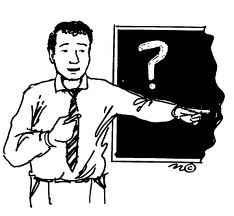Role Of Teacher.
The Oxford English dictionary defines ‘teacher’ as the function or position that somebody has or is expected to have in an organization, in society or in a relationship. It further explains that a teacher is a person whose job is teaching, especially in the school. Teachers have two major roles in the classroom firstly, to create the conditions under which learning can take place; this is known as the social side of teaching. The second role is to impart, by a variety of means, knowledge to their learners; the task oriented side of teaching. Both roles complement each other and are difficult to separate from each other. The role of the teacher varies with the nature of the classroom activity at any given moment. The role can vary from controller to facilitator. The teacher can have many roles and these include; controller, assessor, organizer, prompter, participant, resource, tutor and observer.
We should now look at some of these roles in greater detail. The teacher is the controller of what is said and done; when students speak and the language student’s use. As an assessor the teacher will check student’s performance and progress. We must distinguish between two forms of correction; the first of these is direct correction or on the spot correction for example pronunciation or grammar. The second of these is organized correction which consists of general feedback on essays, reports and assignments. The next role of the teacher is that of the organizer in which the teacher organizes the class, in every sense, and this is one of the teacher’s central roles. Success in this role underlies one’s overall success as a teacher. Examples of organizational aspects of the teacher’s role include giving clear instructions, organizing and setting up activities, managing the class in terms of seating and ensuring the teacher is visible and can be heard at all times. In the role of the prompter the teacher will encourage students to participate in all activities and the teacher is responsible to provide this encouragement. However, it must be noted that too much encouragement can sometimes be aggressive or can cause overreliance on the teacher. As the participant the teacher would become part of the class in activities. Care must be taken not to be over dominant.
The next role to consider is that of the resource; for language students, the teacher is a walking resource on language. Very often, the teacher is called on to explain a new word or grammar point or give a translation. By allowing the students to get on with the activity, the teacher is free to move around and be available to anyone who needs consultation. As tutor the role is similar to that of resource. For example, when doing a project students may need some specific advice and guidance. As the observer the teacher, even when in other roles, needs to observe what is going on in the classroom at the same time. It is necessary to be alert at all times to the effects of our actions and student interactions. Through constantly observing and questioning our procedures and looking out for what leads to successful learning [and what does not], we can develop as teachers. The teacher becomes a performer “sage on the stage” and would have to perform at different levels at different times in the classroom. The teacher can therefore assume a role and act out that role. For all teachers the challenge is to go one developing into the teacher you most want to be. And there are many things a teacher must be responsible for.
These areas of responsibility include organization, security, motivation, instruction and encouragement. Further responsibilities are modelling, guidance, information, feedback and evaluation. It is important to understand teacher-student role relationship as this relationship is at the heart of the classroom process and the role of the teacher or student is influenced by many factors including institution, learning tasks, motivation and physical setting. An understanding and awareness of the intricacies of the social and psychological processes of the classroom is central to effective teacher development. The teacher has to be many things including friendly, approachable, flexible, fair but firm, was prepared and sensitive to individual needs. The teacher must also be respectful, encouraging, motivating, resourceful and willing to explain and offer rationale.
Learning styles in the classroom can vary from group to group and individual to individual and it is the teacher’s responsibility to include as many learner styles as possible. It is necessary to do this in order to facilitate all the different learning styles of the students and to draw out their individual strengths. This can be achieved by varying teaching methods and techniques and especially by using teacher roles as best as possible.
Posted on March 31, 2012, in Teaching and tagged Classroom, Education, Learning, Organization, Oxford English Dictionary, Role, Student, Teacher, The Class (2008 film). Bookmark the permalink. 1 Comment.

Thanks my friend. Hopefully you enjoy future postings just as much.
LikeLike